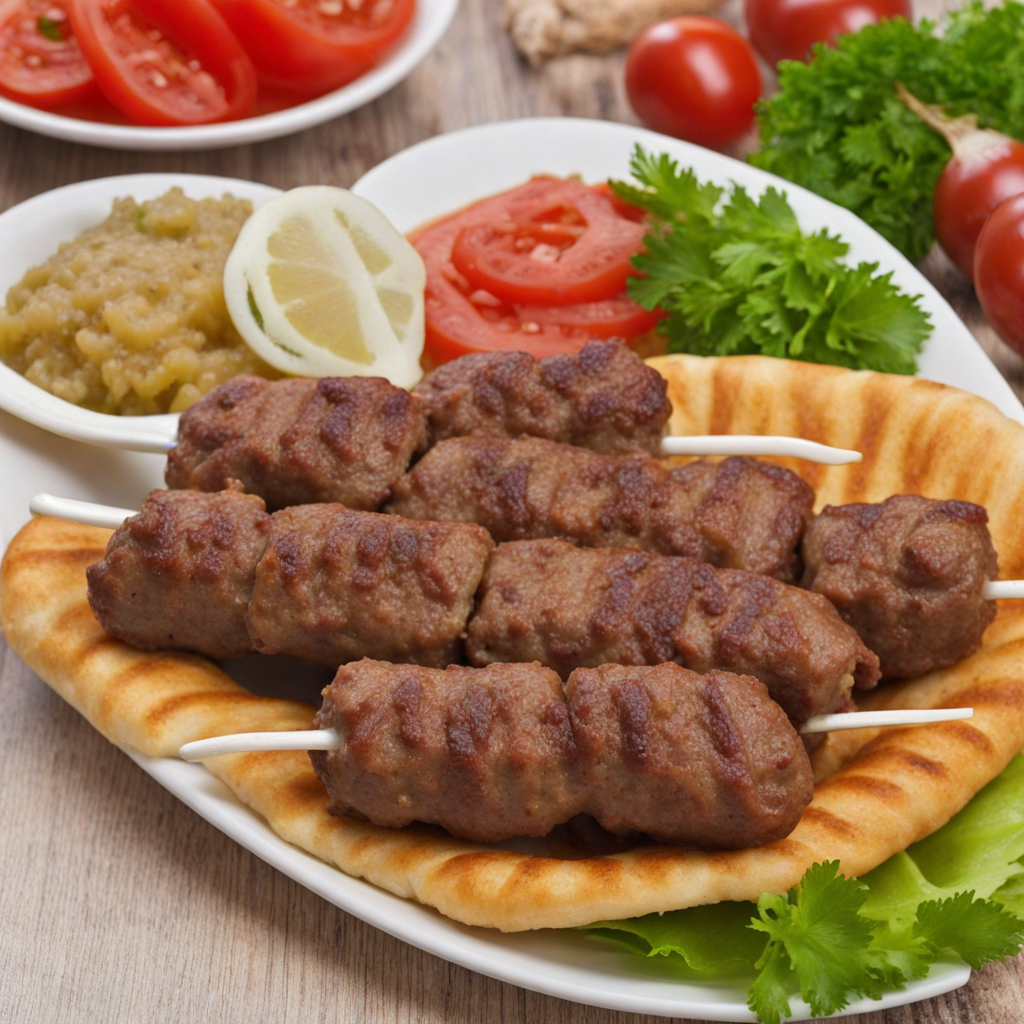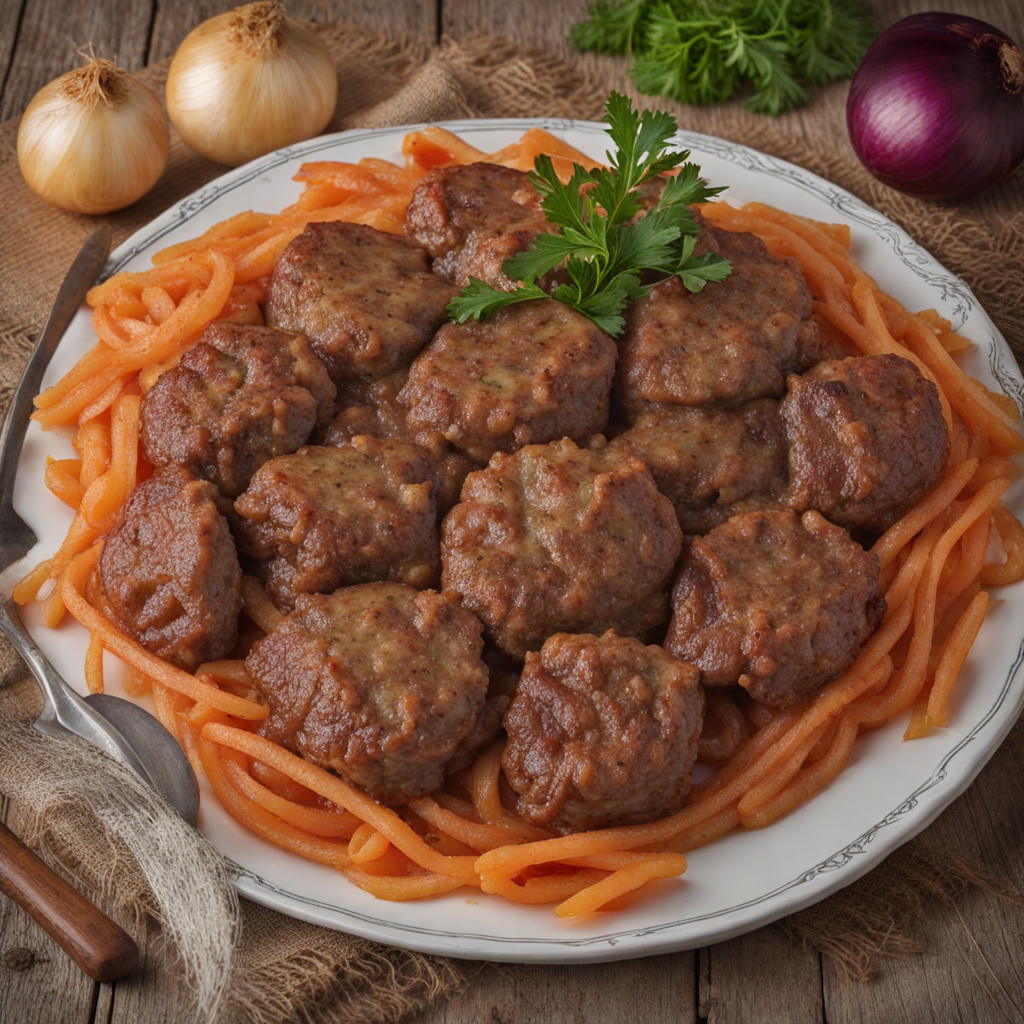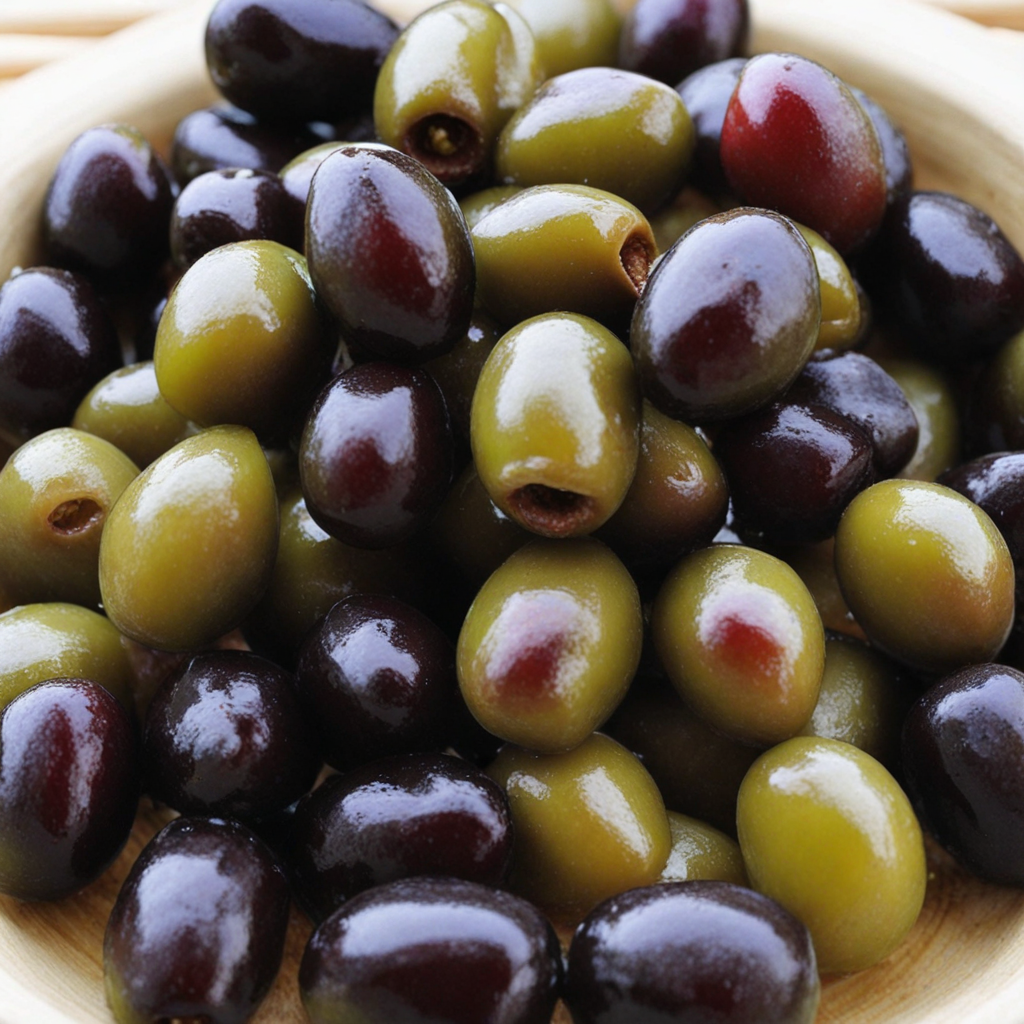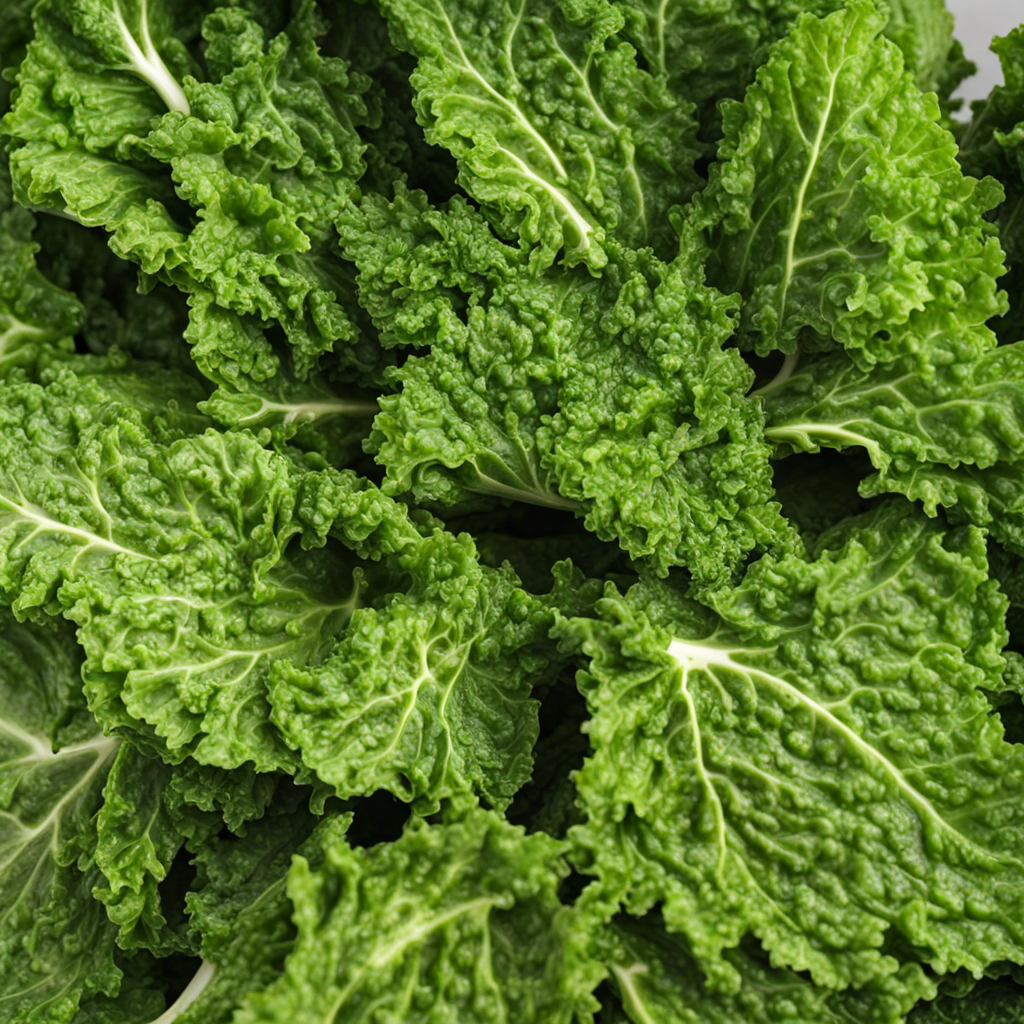Cevapi
Cevapi is a beloved dish originating from the Balkans, particularly prominent in Montenegro, and is a must-try for any adventurous food lover. These small, grilled sausages are traditionally made from a mix of minced meats, primarily beef and lamb, seasoned with a blend of spices that typically includes salt, pepper, and garlic. The resulting flavor is rich and savory, with a smoky aroma that wafts through the air as they sizzle on the grill. The texture is juicy and tender, making each bite a delightful experience. Often served in a warm, fluffy flatbread known as lepinja, Cevapi is typically accompanied by a variety of condiments. A dollop of creamy kajmak, a type of cheese spread, adds a rich, buttery flavor that perfectly complements the spiced meat. Additionally, diced onions and a tangy red pepper relish called ajvar can elevate the dish, offering contrasting textures and flavors that enhance the overall taste. Combining these elements creates a harmonious balance that is both satisfying and immensely flavorful. Cevapi is more than just a meal; it represents a cultural tradition and a communal dining experience in Montenegro. It’s common to enjoy this dish at family gatherings or local festivals, where the grilling of Cevapi becomes a social event. As you take your first bite, you’ll not only savor the unique flavors of this dish but also feel the warmth of Montenegrin hospitality that accompanies it. Whether enjoyed as street food or in a cozy restaurant, Cevapi is a delicious way to explore the culinary landscape of Montenegro.
How It Became This Dish
The History of Ћевапи: A Culinary Treasure of Montenegro #### Origins Ћевапи (pronounced "chevapi") are a type of grilled minced meat dish that has become synonymous with the culinary landscape of the Balkans, particularly in Montenegro. While the exact origins of ћевапи may be debated, it is widely acknowledged that they trace their roots to the Ottoman Empire, which influenced much of the Balkans from the 15th to the 20th centuries. The Ottomans brought with them a rich culinary tradition, introducing various meat dishes and grilling techniques that would later evolve into the beloved ћевапи. The word ћевап itself is derived from the Turkish word "kebap," which reflects this historical connection. Traditionally, ћевапи are made from a blend of minced beef, lamb, or pork, seasoned with spices such as garlic, salt, and pepper. The mixture is formed into small, finger-sized sausages and grilled over an open flame, creating a smoky flavor that is both savory and deeply satisfying. #### Cultural Significance In Montenegro, ћевапи are more than just a popular dish; they represent a vital part of the country's cultural identity. They are often served with somun (a type of flatbread), chopped onions, and a red pepper-based condiment known as ajvar, making for a hearty meal that is both communal and celebratory. ћевапи are commonly enjoyed at family gatherings, social events, and festivals, symbolizing hospitality and togetherness. The dish's significance is further accentuated during religious and national holidays. In Montenegro, where the population is predominantly Orthodox Christian, ћевапи are often served during feasts and celebrations, showcasing the blend of culinary traditions that have shaped Montenegro's identity. The preparation and sharing of ћевапи have become a cherished ritual, bringing families and friends together around the grill. #### Development Over Time As Montenegro's political landscape evolved, so too did its culinary traditions. The dissolution of Yugoslavia in the early 1990s marked a period of turmoil and conflict, but it also sparked a renewed interest in regional cuisines, including that of Montenegro. In this context, ћевапи emerged as a symbol of national pride and cultural heritage, cherished not only as a delicious dish but also as a representation of Montenegrin identity. Throughout the years, the preparation and presentation of ћевапи have undergone various adaptations. While the traditional recipe remains largely unchanged, modern interpretations have emerged, incorporating different spices and meat blends to cater to evolving tastes. Some chefs and home cooks experiment with the addition of herbs such as parsley and variations in cooking methods, including baking or using different types of grills. In urban areas, ћевапи have found a place on the menus of numerous restaurants and eateries, ranging from casual street food stalls to upscale dining establishments. This versatility has contributed to their popularity not only among locals but also among tourists seeking to experience authentic Montenegrin cuisine. Food festivals celebrating regional dishes often feature ћевапи as a highlight, further solidifying their status as a culinary icon. #### Regional Variations While Montenegro has its own distinct style of ћеваpi, the dish is enjoyed throughout the Balkans, each country adding its twist. For example, in Bosnia and Herzegovina, ћевапи are often served with a thicker, more robust type of bread known as lepinja. In Serbia, they are sometimes accompanied by a variety of side dishes, including pickles and salads. Regardless of the region, ћевапи are universally recognized as a beloved staple, often served at barbecues and gatherings. In Montenegro, the preparation of ћеваpi is often a communal affair, with families and friends gathering around a grill to cook and share the dish. This social aspect of eating is deeply ingrained in Montenegrin culture, emphasizing the importance of community and shared experiences. The ritual of grilling ћеваpi has become a cherished tradition, embodying the warmth and hospitality of Montenegrin people. #### Contemporary Trends In recent years, there has been a growing interest in traditional and local foods across the globe, and Montenegro is no exception. The farm-to-table movement has gained traction, with a focus on using locally sourced ingredients to create authentic dishes. This trend has breathed new life into the preparation of ћеваpi, with chefs emphasizing the use of high-quality meats and fresh herbs to enhance the dish's flavors. Moreover, as Montenegro continues to develop its tourism sector, food has become a focal point for attracting visitors. Culinary tours and workshops that include ћеваpi preparation have become popular, allowing tourists to immerse themselves in Montenegrin culture while learning about the history and significance of this traditional dish. The rise of gastronomy tourism has also led to the establishment of numerous restaurants dedicated to showcasing authentic Montenegrin cuisine, with ћеваpi often taking center stage. #### Conclusion The history of ћевапи in Montenegro is a rich tapestry woven from cultural influences, historical events, and culinary evolution. From its Ottoman origins to its current status as a symbol of Montenegrin identity, this beloved dish has stood the test of time, adapting to changing tastes while remaining rooted in tradition. Whether enjoyed at a family gathering, a barbecue with friends, or a restaurant meal, ћеваpi continue to bring people together, embodying the spirit of hospitality and community that is at the heart of Montenegrin culture. As Montenegro moves forward, the legacy of ћеваpi will undoubtedly continue to thrive, celebrating the past while embracing the future.
You may like
Discover local flavors from Montenegro







